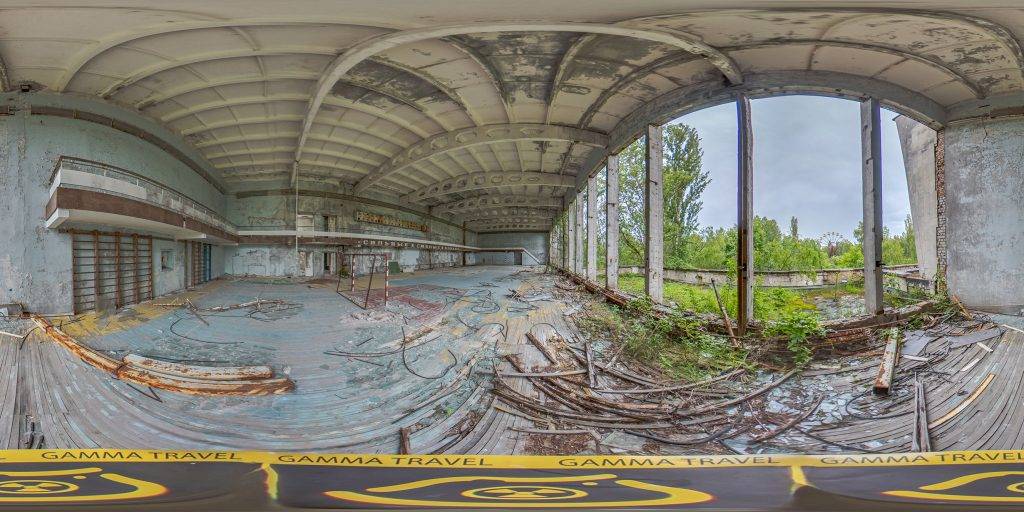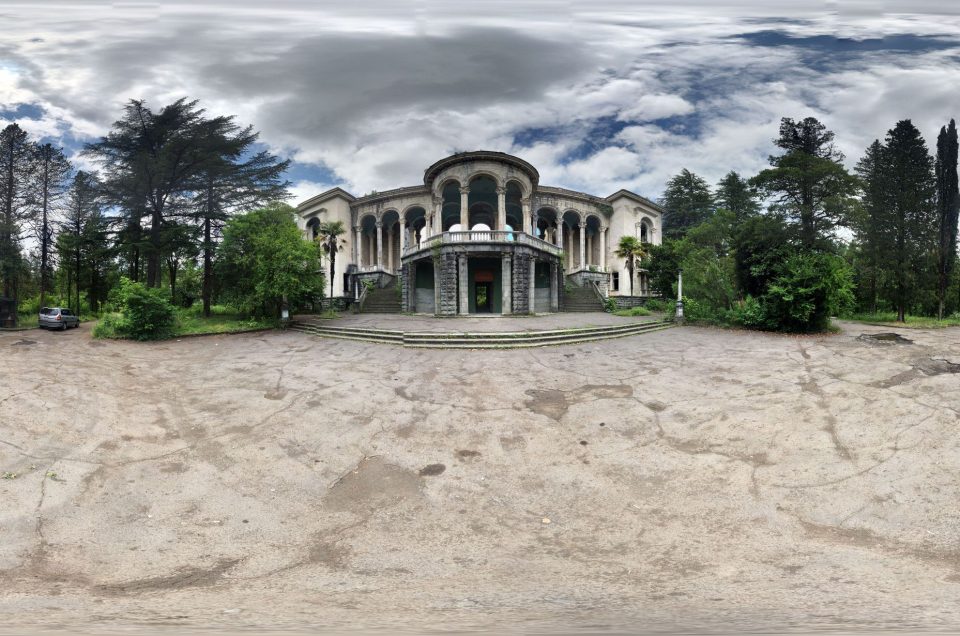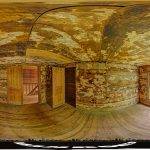Palace of Culture Energetik
Take a 360-degree look around the abandoned Palace of Culture Energetik in the town of Pripyat, Ukraine that was deserted after the Chernobyl Disaster in April of 1986. Enjoy the panoramic images on Google Maps below by Gamma Travel.
Images by: Gamma Travel
About the Palace of Culture Energetik
The Palace of Culture Energetik, located in the abandoned town of Pripyat in Ukraine, is a haunting reminder of a time when this community was thriving and full of life. Built in the 1970s, the palace was meant to be a cultural hub for the workers of the nearby Chernobyl nuclear power plant. It was a place where they could go to watch movies, attend concerts and plays, and participate in a variety of other recreational activities. The name “Energetik” is a play on words, as it means both “energetic” (lively) and “power plant worker”.
Before it was abandoned, the Palace of Culture Energetik was a bustling cultural hub for the workers of the nearby Chernobyl nuclear power plant. It was a place where they could go to watch movies, attend concerts and plays, and participate in a variety of other recreational activities.
The palace was equipped with a large auditorium, which was used for concerts and other performances. It also had a cinema, where workers could go to watch the latest movies. There were also several smaller rooms and spaces that were used for clubs and other organized activities, such as art classes and language courses.
In addition to these cultural amenities, the palace also had a swimming pool and a gym, where workers could go to exercise and relax. It was a popular destination for people looking to escape the stresses of work and enjoy some leisure time.
Overall, the Palace of Culture Energetik played a central role in the lives of the people of Pripyat, and was a vital part of the community’s social fabric. However, this all came to an end on April 26, 1986, when a series of explosions at the nearby Chernobyl nuclear power plant caused a devastating nuclear disaster. The town of Pripyat, including the Palace of Culture Energetik, was immediately evacuated and has remained abandoned ever since.
But today, the palace stands empty and abandoned, a testament to the catastrophic events that occurred at the power plant in 1986. On April 26 of that year, a series of explosions at the plant caused a devastating nuclear disaster that contaminated the surrounding area with radioactive particles. The town of Pripyat, which had a population of nearly 50,000 at the time, was immediately evacuated and has remained uninhabited ever since.
The Palace of Culture Energetik, along with the rest of Pripyat, was abandoned in the aftermath of the disaster. It stands as a haunting reminder of the disaster’s impact on the region, and the lives that were forever changed by the tragedy.
So why has the palace remained abandoned and left to decay over time? One reason is the high levels of radiation that still exist in the area. The nuclear disaster contaminated the surrounding land and water with radioactive particles, making it unsafe for human habitation. While the levels of radiation have decreased significantly over the years, they are still too high for people to live in the area on a permanent basis.
Another reason the palace has remained abandoned is the cost of decommissioning and cleaning up the site. The process of decontaminating an area that has been exposed to radiation is incredibly expensive and time-consuming. It involves removing contaminated soil, cleaning buildings and other structures, and disposing of the waste in a safe and environmentally-friendly manner. The cost of this process, combined with the fact that the area is no longer inhabited, has made it difficult to justify the expenses required to clean up the site.
Despite the challenges, there have been efforts made to preserve the Palace of Culture Energetik and other buildings in Pripyat. The Ukrainian government has established a 30-kilometer exclusion zone around the power plant, which includes the town of Pripyat. This zone is intended to restrict access to the area and prevent further contamination from occurring.
There are also a number of organizations and individuals working to document the history of Pripyat and the impact of the disaster on the region. These efforts include the creation of museums and exhibitions, as well as the preservation of historical documents and artifacts.
While the Palace of Culture Energetik and the rest of Pripyat may never be inhabited again, the efforts to preserve its history and understand the impact of the disaster are important. The tragedy at the Chernobyl power plant serves as a reminder of the dangers of nuclear energy, and the need to prioritize safety and caution in its use. It also serves as a reminder of the resilience and strength of the human spirit, as the people of Pripyat have persevered and found ways to move forward in the wake of such a devastating event.

A 360-degree inside the abandoned Palace of Culture Energetik in Pripyat, Ukraine. Image by Gamma Travel.
Do you have 360-degree panoramic images captured in an abandoned location? Send your images to Abandonedin360@gmail.com. If you choose to go out and do some urban exploring in your town, here are some safety tips before you head out on your Urbex adventure.
Unlock the secrets of exploration by diving into precise GPS data available exclusively for an array of hidden gems and hundreds of other captivating sites, all within our members’ section. By investing in a Gold Membership, you’re not just gaining access; you’re securing a key to a vast, global archive of abandoned, untouched, and mysterious locations waiting to be discovered. Embark on your adventure with confidence, knowing every corner of the world can be within your reach. Don’t just observe—explore, discover, and claim the extraordinary journey that lies ahead with our treasure trove of world secrets. Subscribe now and transform the way you see the world!
Click on a state below and explore the top abandoned places for urban exploring in that state.






